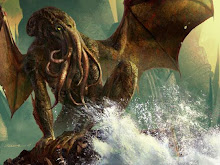...well, sort of. From Wikipedia:
On September 20, 1995, it was reported that the 478th Civil Affairs Battalion of the United States Army Reserve was to conduct a training exercise simulating an invasion of a foreign island. They were to land on Key West and conduct affairs as if the islanders were foreign. However, no one from the 478th notified Conch officials of the exercise.Then there's the annexation of the old 7 Mile Bridge! But, I'll leave that to you to research.
Seeing another chance at publicity, Wardlow and the forces behind the 1982 Conch Republic secession mobilized the island for a full-scale war (in the Conch Republic, this involves firing water cannons from fireboats and hitting people with stale Cuban bread), and protested to the Department of Defense for arranging this exercise without consulting the City of Key West. The leaders of the 478th issued an apology the next day, and they submitted to a surrender ceremony on September 22.
During the Federal government shutdown of 1995, as a protest, the Republic sent a flotilla of Conch Navy, civilian and fire department boats to Fort Jefferson, located in Dry Tortugas National Park, in order to reopen it. The action was dubbed a "full scale invasion" by the Conch Republic. Inspired by efforts of the Smithsonian Institution to keep its museums open by private donations, local residents had raised private money to keep the park running (a closed park would damage the tourist-dependent local economy), but could find no one to accept the money and reopen the park.
When officials attempted to enter the monument, they were cited. When the citation was contested in court the following year, the resultant case, The United States of America v. Peter Anderson, was quickly dropped.


No comments:
Post a Comment